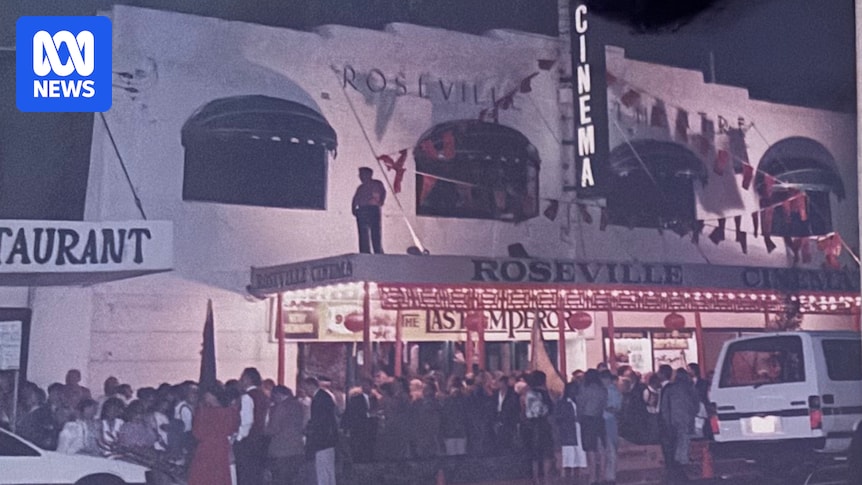
One cool evening in July 1937, hundreds of stylish Sydneysiders gathered at the newly opened Ritz in Randwick. They had a choice of two new movies from America — the lumberjack drama God’s Country and the Woman or the comedy Call it a Day. North of the harbour, the brand-new Roseville Cinema was also dazzling crowds with Hollywood releases. Sydney cinema was enjoying a heyday.
From the 1920s to the 1940s, as Hollywood basked in its Golden Age, dozens of picture palaces across the city filled out every weekend. It wasn’t just the captivating stories from far away that delighted Sydneysiders; it was the palaces themselves. Their opulent features, like stage drapes, pipe organs, opera boxes, and uniformed ushers, provided their own escape into fantasy.
A Parade of Challenges
According to James Findlay, an Australian historian at the University of Sydney, “The glory days of the 1920s saw a rush of modernity and cinema was seen as this wonderful spectacle that working-class families could enjoy.” He noted that cinema attendance at this time even outstripped church attendance, becoming an important social institution for Sydneysiders.
However, for many picture palaces, the curtain was destined to fall. The advent of television in the 1950s and 1960s posed a significant challenge. This was only the beginning, as multiplexes, video shops, DVDs, a pandemic, and the rise of streaming services further eroded their dominance.
“So many of these wildly extravagant entertainment spaces that people found exotic have fallen into disrepair,” Dr. Findlay expressed. “Australia has a pretty poor record of recognising the importance of visual heritage and the role that cinemas play in that history.”
Many couldn’t reclaim their former glory. The Victory De-Luxe Theatre in Kogarah, later the Mecca, opened in 1920 but closed in 2003. During the 1990s, it battled to compete on price with the Greater Union at Hurstville Westfield, famously offering the cheapest cinema tickets in Sydney at just $5. Today, it’s apartments.
The Need to Evolve
Despite the challenges, a small number of iconic Sydney cinemas stand as a testament to resilience. The cherished Hayden Orpheum in Cremorne, an art deco gem built in 1935 and restored in 1987, continues to enchant audiences. The Golden Age Cinema in Surry Hills has continually captivated film lovers since the 1940s, alongside the enduring Ritz and Roseville cinemas.
Emma Addario, whose family bought Roseville Cinema in the 1970s, attributes its ongoing success to serving art house and quality mainstream films to a loyal audience who value cinema as an experience. “People love that there’s somebody at the door to greet them and rip their ticket,” she said. “We’ve kept that aspect of the experience from the 1930s.”
However, Eddie Tamir, whose family bought the Ritz just before COVID hit, says nostalgia and affection for local cinemas don’t always translate to bums on seats. “When they close down, people say, ‘What a pity, such a beautiful place’. But did they go to that cinema in the last 10 years? Often not.”
Mr. Tamir’s solution is to provide an “eclectic mix” by preserving the building’s history, embracing nostalgia by screening 35mm and 70mm film prints, and hosting director retrospectives and film festivals while also offering blockbuster hits.
Hopes on the Younger Generation
Both Ms. Addario and Mr. Tamir are optimistic about the future of cinema, buoyed by a steady stream of films in production and a surprisingly robust interest from younger generations. “Cinemas still provide a form of escapism for a couple of hours, akin to a mini holiday,” Ms. Addario said.
Mr. Tamir agrees young people are sticking with cinema, in part thanks to social media platform Letterboxd, which allows users to share their tastes and create watch lists, and independent studios like Neon and A24 creating Academy Award winners that appeal to younger viewers.
“When people claim young folks aren’t going to cinemas, it’s simply not true. We’ve screened the 70mm print of Lawrence of Arabia at the Ritz to full houses of 20- and 30-somethings. They crave both the classics and the new releases, which gives us a lot of hope for the future.”
He adds that no matter how the industry and society evolve, the communal experience of cinema endures. “It’s about celebrating that innate human desire to share laughter and tears. This ‘campfire’ instinct is what keeps cinema alive.”







